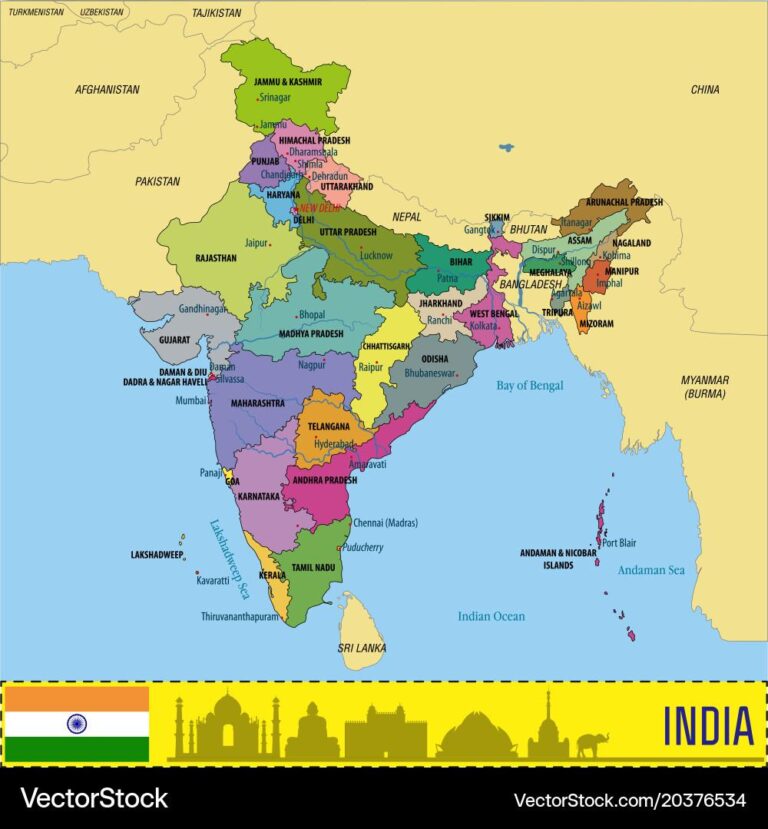The United States is intensifying its scrutiny of India and China amid growing concerns over their economic and strategic ties with Russia, Fox Business reports. As Washington seeks to impose stricter measures in response to Moscow’s actions on the global stage, New Delhi and Beijing find themselves increasingly caught in the crosshairs of American retaliation efforts. This development underscores the complexities of global alliances and the shifting dynamics of international diplomacy in an era marked by heightened geopolitical tensions.
India and China Face Intensified US Scrutiny Amid Russia Relationship Concerns
In a marked shift in U.S. foreign policy, both India and China are encountering heightened scrutiny over their economic and diplomatic engagements with Russia. Washington’s concerns are not merely rooted in routine geopolitical calculations but stem from a growing fear that these bilateral ties could undermine Western sanctions regimes aimed at isolating Moscow. Congressional leaders and key administration officials have started signaling potential retaliatory measures that could affect trade, technology transfers, and strategic military cooperation.
Experts identify several focal points driving this tension, including:
- Energy transactions: India and China continue to import discounted Russian oil, challenging the unified front against Moscow.
- Defense collaborations: Ongoing military partnerships with Russia, including arms purchases, pose security dilemmas for the U.S.
- Diplomatic positioning: Both nations’ calls for neutrality contrast sharply with Western efforts to marginalize Russia on the global stage.
| Country | Russian Oil Import (2023) | Key Defense Deals | U.S. Response |
|---|---|---|---|
| India | 800,000 barrels/day | Sukhoi Jets, AK-203 Rifles | Potential export restrictions |
| China | 1.2 million barrels/day | S-400 Missile Systems, Naval Vessels | Technology sanctions review |
Strategic Implications for Indo-Pacific Security and Global Trade Dynamics
The evolving geopolitical friction between the US and nations with close Russia ties places India and China at a pivotal crossroads, reshaping the security architecture of the Indo-Pacific region. Washington’s increasing scrutiny signals potential shifts in defense posturing, with emphasis on strengthening alliances and enhancing maritime capabilities to counterbalance China’s assertiveness and Russia’s influence. This maneuver not only heightens regional military dynamics but also escalates diplomatic tensions, compelling regional players to recalibrate their foreign policies to maintain strategic autonomy.
Beyond security, global trade dynamics stand vulnerable as supply chains teeter amid sanctions and retaliatory measures. Key trade routes in the Indo-Pacific-crucial arteries for energy, technology, and raw materials-face disruption risks that could reverberate across international markets. Stakeholders now must navigate:
- Trade realignment: Diversifying partners and routes to mitigate dependency.
- Regulatory shifts: Adjusting to sanction regimes impacting bilateral commerce.
- Investment recalibration: Reevaluating projects sensitive to geopolitical risks.
| Aspect | Potential Impact |
|---|---|
| Maritime Security | Increased naval patrols & joint exercises |
| Supply Chains | Disruptions in semiconductor and energy sectors |
| Diplomatic Ties | Strained relations, cautious engagement |
| Investment Flows | Delays & redirections towards stable markets |
Policy Recommendations for Navigating Rising Geopolitical Pressures and Economic Risks
In an increasingly fraught geopolitical landscape, crafting strategic responses is crucial for nations like India and China, which find themselves under intensified scrutiny due to their ties with Russia. Policymakers must prioritize diplomatic agility-engaging in multilayered dialogues not only with the US but also with other global powers to mitigate escalating tensions. Strengthening international alliances without compromising sovereign interests will be key to balancing economic stability and geopolitical realities.
On the economic front, governments should adopt comprehensive contingency plans that address vulnerabilities exposed by potential US sanctions or trade restrictions. This includes:
- Diversifying supply chains to reduce overreliance on any single market.
- Enhancing domestic manufacturing capabilities to safeguard self-sufficiency.
- Implementing robust financial oversight to monitor cross-border capital flows.
| Policy Area | Recommended Action | Expected Outcome |
|---|---|---|
| Diplomatic Strategy | Multi-track diplomacy with East and West | Reduced geopolitical isolation |
| Trade & Industry | Develop alternative markets and local industries | Economic resilience amid sanctions |
| Financial Security | Strengthen regulatory frameworks | Mitigate risk of capital flight |
In Retrospect
As the United States weighs its response to Russia’s deepening global alliances, India and China find themselves increasingly scrutinized amid growing geopolitical tensions. The evolving dynamics underscore the complexity of international relations in a multipolar world, where economic interests and strategic partnerships often collide. How Washington chooses to navigate this delicate balance will have significant implications not only for these major Asian powers but also for the broader landscape of global diplomacy and security.




